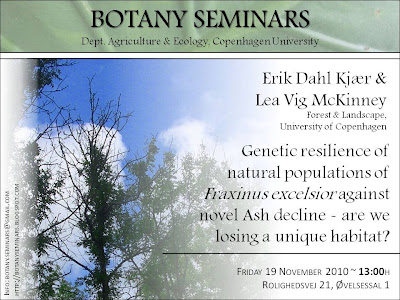
Plant Competition: regulation and functional significance of shade avoidance responses.
Ronald Pierik
Plant Ecophysiology, Institute of Environmental Biology, Utrecht University, the Netherlands
Plants growing in dense vegetations compete for resources such as water, nutrients and light. Shade-intolerant plants ensure light capture through so-called shade avoidance responses to neighbors which include upward leaf movement and increased shoot elongation. Through these morphological acclimations, the photosynthetically active leaves are positioned relatively high in a vegetation where light availability is maximal.
Neighbor detection occurs predominantly through spectral changes in the light reflected from or transmitted through neighboring vegetation. Red light (R) is absorbed for photosynthesis whereas far-red light (FR) is reflected, thus lowering the R:FR ratio which can be sensed by the phytochrome photoreceptors. Low R:FR perception regulates a variety of hormones, such as auxin, gibberellin and ethylene, to control the adaptive growth responses. I will outline current insights into the regulatory components underlying these responses and their functional significance for shade avoidance and competitive power. Furthermore I will discuss how these insights can help ask and answer questions regarding ecological trade-offs, using current work on far-red light mediated repression of defense against pathogens as an example.
Neighbor detection occurs predominantly through spectral changes in the light reflected from or transmitted through neighboring vegetation. Red light (R) is absorbed for photosynthesis whereas far-red light (FR) is reflected, thus lowering the R:FR ratio which can be sensed by the phytochrome photoreceptors. Low R:FR perception regulates a variety of hormones, such as auxin, gibberellin and ethylene, to control the adaptive growth responses. I will outline current insights into the regulatory components underlying these responses and their functional significance for shade avoidance and competitive power. Furthermore I will discuss how these insights can help ask and answer questions regarding ecological trade-offs, using current work on far-red light mediated repression of defense against pathogens as an example.










